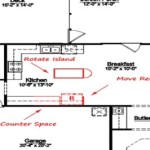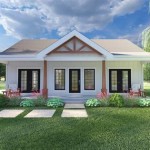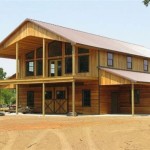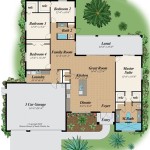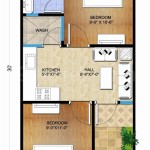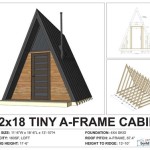Pole Barns With Living Quarters Plans: A Comprehensive Guide
Pole barns, traditionally associated with agricultural storage and workshops, have evolved into versatile structures capable of accommodating residential living spaces. The integration of living quarters within a pole barn offers a cost-effective and customizable housing solution that combines functionality with practicality. These structures are particularly appealing to individuals seeking flexible living arrangements, such as those desiring ample space for hobbies, workshops, or home-based businesses. This article will delve into the various aspects of pole barns with living quarters plans, covering design considerations, construction methods, and potential benefits.
Understanding the Appeal of Pole Barn Homes
The burgeoning popularity of pole barn homes stems from several key advantages. They typically offer lower construction costs compared to traditionally framed houses. The simplified construction process and reduced material requirements contribute significantly to cost savings. A pole barn structure relies on posts embedded in the ground or attached to a concrete foundation, eliminating the need for a continuous foundation wall. This reduces the amount of concrete required and simplifies the excavation process. Furthermore, the large, open spans characteristic of pole barn construction allow for flexible interior layouts and minimize the need for load-bearing walls. This adaptability is a major draw for those seeking to customize their living space to meet specific needs.
The speed of construction is another significant advantage. Pole barn construction is generally faster than traditional building methods due to the simpler framing process and the pre-engineered nature of many components. This accelerated construction timeline can translate to reduced labor costs and a quicker move-in date. Moreover, pole barns offer inherent energy efficiency. The large wall cavities created by the post-frame construction method provide ample space for insulation, leading to reduced heating and cooling costs. The use of high-quality insulation materials can further enhance energy performance and create a comfortable living environment.
Finally, the durability and longevity of pole barns are compelling reasons for choosing this type of structure. Treated wood posts are resistant to decay and insect infestation, ensuring the structural integrity of the building for many years. Metal roofing and siding are also highly durable and require minimal maintenance. The robust construction of a pole barn provides excellent resistance to wind, snow, and seismic forces, making it a reliable and safe housing option.
Key Considerations for Designing Pole Barn Living Quarters
Designing a pole barn with living quarters requires careful consideration of several factors. The size and layout of the living space should be determined based on the owner's needs and preferences. It is crucial to define the number of bedrooms, bathrooms, living areas, and kitchen space required. The location of the living quarters within the pole barn should also be carefully considered, taking into account factors such as natural light, privacy, and access to utilities.
Building codes and regulations play a critical role in the design process. It is imperative to consult with local building officials to ensure that the pole barn meets all applicable codes for residential occupancy. These codes typically address aspects such as structural integrity, fire safety, plumbing, electrical systems, and ventilation. Failure to comply with building codes can result in costly delays and modifications. Permits and inspections are usually required throughout the construction process to verify compliance with these regulations.
Insulation is paramount for creating a comfortable and energy-efficient living space. Different types of insulation, such as spray foam, fiberglass batts, and rigid foam boards, can be used to insulate the walls, roof, and floor. The choice of insulation material should be based on factors such as R-value, cost, and ease of installation. Proper insulation is essential for minimizing heat loss in the winter and heat gain in the summer, leading to reduced energy consumption and lower utility bills. Ventilation is also vital for maintaining indoor air quality and preventing moisture buildup. Proper ventilation can be achieved through the installation of windows, vents, and exhaust fans.
Planning for utilities is a crucial step in the design process. This includes determining the location of the electrical panel, plumbing lines, and HVAC system. It is essential to ensure that the pole barn has an adequate electrical service to meet the power demands of the living quarters. Plumbing lines should be properly sized and installed to provide sufficient water pressure and drainage. The HVAC system should be designed to efficiently heat and cool the living space. Careful planning for utilities is essential for creating a functional and comfortable living environment.
Exploring Pole Barn Living Quarters Plans and Customization Options
Numerous pole barn living quarters plans are available to suit varying needs and preferences. These plans typically include detailed floor plans, elevations, and structural drawings. Some plans offer a basic layout, while others provide more elaborate designs with multiple bedrooms, bathrooms, and living areas. Many companies offer customizable plans, allowing homeowners to modify the layout and features to meet their specific requirements. Customization options may include adding or removing walls, changing the size of windows and doors, and selecting different finishes.
The interior design of the living quarters can be tailored to reflect the homeowner's personal style. Open floor plans are a popular choice, as they create a spacious and airy feel. Exposed wood beams and other rustic elements can be incorporated to enhance the pole barn aesthetic. Modern finishes and fixtures can also be used to create a contemporary living space. The choice of flooring, cabinetry, and paint colors can significantly impact the overall look and feel of the interior.
Exterior finishes play a crucial role in the aesthetics and durability of the pole barn. Metal siding is a common choice due to its durability, low maintenance requirements, and wide range of colors and styles. Wood siding can also be used to create a more traditional look. Stone or brick accents can be added to enhance the visual appeal of the exterior. The choice of roofing material is also important. Metal roofing is a popular option due to its longevity and weather resistance. Asphalt shingles can also be used to provide a more traditional look.
Landscaping can further enhance the curb appeal of the pole barn home. Trees, shrubs, and flowers can be planted to create a visually appealing and inviting landscape. Outdoor living spaces, such as patios and decks, can be added to extend the living area and provide opportunities for outdoor relaxation and entertainment. Thoughtful landscaping can transform a pole barn into a beautiful and functional home.
Navigating the Construction Process of Pole Barn Living Quarters
The construction process of a pole barn with living quarters typically involves several stages. The first step is site preparation, which includes clearing the land, grading the site, and installing utilities. The next step is the construction of the pole barn frame, which involves setting the posts and attaching the roof trusses and wall girts. The exterior shell is then constructed, which includes installing the siding, roofing, windows, and doors. Once the exterior shell is complete, the interior build-out can begin.
Framing the interior walls is one of the crucial steps. Interior walls can be framed using traditional wood framing or metal studs. The framing should be done in accordance with local building codes and regulations. Electrical wiring and plumbing lines are then installed within the walls. Insulation is installed in the walls, roof, and floor to create an energy-efficient living space. The drywall is then installed over the framing, creating a smooth surface for painting or wallpapering.
Installing the flooring, cabinetry, and fixtures is the next stage. The choice of flooring materials depends on the homeowner's preferences and budget. Common flooring options include hardwood, tile, laminate, and carpet. Cabinetry is installed in the kitchen and bathrooms, providing storage space and enhancing the functionality of the living space. Fixtures, such as sinks, toilets, and showers, are installed in the bathrooms. Lighting fixtures are installed throughout the living quarters to provide illumination.
The final step in the construction process is finishing the interior and exterior. This includes painting or wallpapering the walls, installing trim and molding, and completing any remaining landscaping. A final inspection is conducted to ensure that the pole barn meets all applicable building codes and regulations. Once the inspection is passed, the pole barn is ready for occupancy.
Cost Considerations for Pole Barn Living Quarters Plans
The cost of building a pole barn with living quarters can vary significantly depending on several factors, including the size and complexity of the design, the materials used, and the labor costs. Generally, the cost per square foot is lower compared to traditional stick-built homes. This cost advantage is primarily due to the simplified construction process and reduced material requirements. However, it is essential to develop a detailed budget and track expenses throughout the construction process to avoid unexpected costs.
Material costs represent a significant portion of the overall cost. The price of lumber, metal siding, roofing, insulation, windows, and doors can vary depending on the quality and quantity of materials used. It is advisable to obtain multiple quotes from different suppliers to ensure that you are getting the best prices. Labor costs also contribute significantly to the overall cost. Hiring experienced contractors can help to ensure that the construction is done correctly and efficiently. However, labor costs can vary depending on the location and the availability of skilled labor.
Permitting fees and inspection costs should also be factored into the budget. These fees can vary depending on the local building codes and regulations. Financing options for pole barn homes are available, including construction loans and mortgages. It is advisable to shop around for the best interest rates and terms. Grants and incentives may also be available to help offset the cost of building a pole barn home. These incentives may be offered by government agencies or utility companies to promote energy efficiency and sustainable building practices.
Ultimately, building a pole barn with living quarters can be a cost-effective housing solution. However, careful planning and budgeting are crucial to ensure that the project stays within budget and meets the homeowner's needs and expectations.

Pin Page

Metal Buildings With Living Quarters Floor Plans In 2024

Horse Barns With Living Quarters Floor Plans

Metal Buildings With Living Quarters Floor Plans In 2024

Horse Barns With Living Quarters Floor Plans

Horse Barns With Living Quarters Floor Plans

Pole Barn Homes Beehive Buildings

8 Best Barndominium Plans With Living Quarters

Horse Barns With Living Quarters Floor Plans

Enhance Your Home Pole Barn With Apartment Solutions

